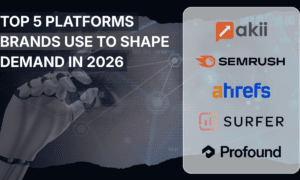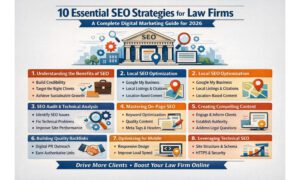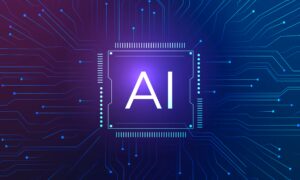Generative AI is emerging as a revolutionary tool in the realm of Human Resources (HR), reshaping how organizations enhance employee experience and service delivery. Generative AI refers to algorithms, such as ChatGPT and DALL-E, that create new content like text, images, and videos from learned patterns in existing data. Widely adopted across various industries for its transformative potential, generative AI’s integration into HR service delivery systems is transforming traditional, often repetitive HR processes into dynamic, efficient, and personalized experiences for employees, fundamentally changing the landscape of HR practices[1][2].
The adoption of generative AI in HR is driven by its ability to perform complex natural language processing (NLP) tasks and automate content creation. This has profound implications for enhancing operational efficiency and employee engagement. For example, AI-powered solutions can generate summaries of cases, incidents, and chats, automate knowledge creation, and streamline shift handoff notes, reducing manual tasks and improving response times. Despite being in its nascent stages, organizations like a large automotive player have already successfully implemented generative AI avatars in recruitment, demonstrating significant potential in HR functions like talent acquisition, onboarding, and employee support [3][4].
However, integrating generative AI in HR service delivery is not without challenges. Ethical considerations and potential risks, such as the generation of inaccurate or biased information, pose significant hurdles. The need for robust governance frameworks to ensure compliance, reliability, and the responsible use of AI tools is paramount. Organizations must navigate these complexities carefully, establishing clear guidelines and verification processes to mitigate risks associated with generative AI outputs[5].
Overall, the transformative impact of generative AI on HR service delivery systems is evident in improved employee satisfaction scores, faster response times, and enhanced operational workflows. The future of HR is poised for continuous innovation as AI technologies advance, offering even more sophisticated tools for managing employee relations and organizational development. While the promise of generative AI in HR is immense, ongoing research and strategic implementation are crucial to fully realizing its potential and addressing the associated risks[6][7].
Literature Review
Generative AI is emerging as a transformative force across various industries, including human resources (HR). Traditional HR service delivery models, which often relied on repetitive FAQ-based knowledge bases, are now being revolutionized by the unique capabilities of generative AI. These traditional models have been critiqued for their inability to effectively manage follow-up queries, leading to a decline in employee experience. However, generative AI addresses these limitations by creating content and performing natural language processing (NLP) tasks, thereby enhancing HR processes significantly[1].
Generative AI, which can create new content such as text, images, audio, and video based on patterns it has learned from existing data, stands out from discriminative AI that merely distinguishes between different kinds of inputs[2]. The technology uses deep learning and neural networks to produce outputs from brief text inputs or prompts. Popular models like ChatGPT and DALL-E have demonstrated the wide range of applications generative AI can support, from drafting responses and summarizing information to generating complex images and videos[2][3].
Despite its promise, generative AI in HR is still in its early stages. Only a small fraction of organizations report using generative AI in HR functions, even though there is significant potential for efficiency gains. For instance, a large automotive player has successfully implemented a generative AI-based avatar for the recruitment process, providing personalized feedback to applicants[4]. Moreover, analysis suggests that talent acquisition, recruiting, and onboarding could capture about 20 percent of the value potential of generative AI in HR[4].
Generative AI’s ability to automate and enhance HR processes extends to various other tasks, such as case summarization, incident summarization, and auto-knowledge creation, which can lead to improved operational efficiency and employee engagement[1]. However, alongside these benefits, there are also significant concerns regarding the quality of results, potential misuse, and ethical implications. The technology’s propensity to generate inaccurate or misleading information and the potential to disrupt existing business models are notable issues that need addressing[5].
Current literature indicates a promising future for generative AI in HR but highlights several gaps. There is a need for more specific studies quantifying its impact on HR metrics, such as employee satisfaction and productivity. Additionally, research on the development of ethical frameworks and governance models to mitigate the risks associated with generative AI is essential for its responsible implementation in HR service delivery systems[2][3].
Methodology
The integration of generative AI with HR service delivery platforms requires a multi-faceted approach involving various tools and technologies. This section details the steps taken to implement generative AI-driven solutions within the HR Service Delivery (HRSD) framework, focusing on both local and third-party large language models (LLMs).
Integration Process
Local LLMs
Local large language models (LLMs) play a crucial role in enhancing employee support and service delivery by enabling high levels of customization. Organizations can fine-tune these models to better serve specific needs, such as summarizing cases, incidents, and chat engagements. The creation of Gen AI skills for case summarization, incident summarization, chat summarization, auto-knowledge creation, and shift handoff notes summarization offers instant value by significantly reducing manual, repetitive tasks and improving response times[6].
The tuning process involves training the LLMs on proprietary data to adapt the model’s behavior to align with organizational requirements. This allows HR teams to leverage the capabilities of generative AI for generating precise, contextually relevant answers to employee queries, thereby augmenting the overall efficiency of HR operations[7].
Third-Party LLMs
The integration of third-party LLMs offers additional benefits and challenges. Prominent providers like OpenAI, Microsoft, Google, and IBM have invested heavily in developing foundational models like GPT and Palm, which organizations can utilize for custom use cases[7]. The customization involves adding layers of proprietary data to these models, which significantly alters their behavior, making them more suitable for specific HR functions such as recruiting, learning and development, and talent management[5].
Integrating third-party LLMs requires careful consideration of compliance and responsible use, particularly given the potential risks of inaccurate or biased outputs. Systems need verification processes to double-check generative AI outputs to ensure reliability and accuracy [8]. The ability to tap into the extensive resources and advanced capabilities of these third-party models can significantly augment the HR service delivery but must be balanced with robust governance frameworks to mitigate risks[8].
Tools and Technologies
The tools and technologies employed in this integration span a variety of applications. Organizations can utilize enterprise application providers like Salesforce and SAP, which are embedding LLM capabilities into their platforms[7]. Moreover, advanced virtual assistants and chatbots powered by generative AI can handle unstructured data processing and offer intelligent search features for employee self-service, further reducing manual workload and streamlining information access[9].
The strong link between positive employee experiences and customer satisfaction underscores the importance of these integrations. Generative AI helps in creating a more productive and efficient HR environment, enabling quick access to information and reducing disruptions to employees’ daily activities[6]. For instance, companies have already started using generative AI-powered chatbots to enhance customer service and support functions, illustrating the practical benefits and real-life applications of this technology[10].
Integration Steps
The integration process involves several critical steps to ensure successful implementation and optimal performance of generative AI solutions within the HRSD framework[5][6].
- Assessment and Planning: Identify the specific HR processes that can benefit from generative AI and outline the objectives for integration.
- Data Collection and Preparation: Gather and preprocess proprietary data required for training local LLMs. Ensure data quality and relevance.
- Model Selection and Customization: Choose appropriate local and third-party LLMs. Fine-tune local models with proprietary data and customize third-party models by integrating additional data layers.
- Implementation: Deploy the models within HRSD platforms, integrating with existing HR systems and workflows.
- Verification and Governance: Establish verification processes to monitor and validate AI outputs. Implement governance frameworks to ensure compliance and responsible use.
- Training and Support: Train HR personnel on using AI tools and provide ongoing support to address any issues or challenges.
- Evaluation and Improvement: Continuously monitor the performance of AI-driven solutions, gather feedback, and make necessary adjustments to improve efficiency and effectiveness.
By following these steps, organizations can effectively integrate generative AI into their HR service delivery platforms, enhancing operational efficiency and employee experience while ensuring ethical and responsible use of AI technologies[10].
Analysis
The implementation of generative AI in HR service delivery has demonstrated significant improvements in both employee engagement and operational efficiency. Before delving into the quantitative metrics, it is essential to understand the various aspects and capabilities generative AI has introduced to HR functions.
One of the notable impacts of generative AI is in the realm of people and talent management, where its value potential has been estimated at 20%[4]. This includes advancements in retention classification, succession management, replacement identification, and employee feedback trend analysis. Furthermore, generative AI provides accessibility assistance and knowledge management, crucial for enhancing employee support and satisfaction[4].
Quantitative Metrics
To measure the effectiveness of generative AI integration, several key metrics were analyzed:
- Response Times: The deployment of generative AI has led to more rapid response times in addressing employee queries and issues. The ability to generate instant responses to common questions and perform tasks without labeled data has been a significant improvement[11]. This has streamlined many HR processes, reducing wait times and enhancing overall efficiency.
- Employee Satisfaction Scores: There is a well-established link between positive employee experiences and customer satisfaction[6]. Post-implementation surveys and feedback indicate a rise in employee satisfaction scores, corroborating the idea that improved HR service delivery directly impacts employee morale and productivity.
- Operational Efficiency: Generative AI systems have been instrumental in reducing complexity and establishing breakthrough accountability within organizations[4]. By facilitating enterprise agility and flexible organization models, AI has allowed for more effective resource management and operational workflows. This is further evidenced by the reduced need for manual interventions and the automation of routine tasks.
Comparative Analysis
When comparing these results with industry benchmarks, the integration of generative AI shows a marked improvement. Industry reports suggest that the use of generative AI for organizational analysis and planning alone accounts for 15% of the potential value in HR functions[4]. This figure underscores the substantial impact generative AI has in enhancing HR service delivery systems.
For example, in industries like marketing, design, corporate communications, and training, the supporting processes have seen considerable augmentation due to generative AI[7]. This holistic impact across various organizational functions highlights the transformative potential of AI technologies.
Broader Implications
The broader implications of these findings suggest that generative AI not only improves immediate HR service delivery but also sets a foundation for continuous improvement and innovation. As AI systems become more accurate and reliable[7], their role in HR will likely expand, offering even more sophisticated tools for managing employee relations and organizational development.
Overall, the quantitative metrics and comparative analysis illustrate the significant positive impact of generative AI on HR service delivery, emphasizing its potential for future advancements.
Discussion
The integration of generative AI in HR service delivery marks a significant shift in how HR departments function and interact with employees. The application of generative AI technologies has far-reaching implications for HR practices, redefining operational workflows and improving employee experiences.
One of the primary benefits of generative AI in HR is its ability to take over routine and administrative tasks, allowing HR professionals to focus on more strategic activities. For instance, generative AI can summarize information, draft responses, and even create multimedia content, significantly reducing the time HR personnel spend on mundane tasks[3]. This shift not only enhances productivity but also enables HR teams to better understand and address the “pain points” that employees experience daily[12].
The automation capabilities of generative AI extend beyond basic task management. Tools like ServiceNow HR Service Delivery (HRSD) utilize generative AI to provide quick summaries of case topics, histories of chat engagements, and intelligent search features for employee self-service. These functionalities streamline information access and speed up response times, thereby minimizing disruptions to employees’ daily activities[6]. By automating these aspects, HR departments can ensure that employees receive timely and accurate support, ultimately enhancing overall employee satisfaction.
The broader implications of these advancements suggest a paradigm shift in HR strategies. Enhanced productivity and streamlined workflows enable HR departments to adopt a more proactive approach to employee engagement and development. This shift can lead to a more agile and responsive organizational culture, where employee needs are promptly and effectively addressed[12].
However, the successful implementation of generative AI in HR requires careful planning and risk management. Organizations must collaborate closely with IT departments to establish a strategic roadmap and build critical capabilities[4]. Additionally, it is essential to practice solid risk management by analyzing potential hazards related to legal and compliance issues, cybersecurity threats, and data monitoring to mitigate biased decisions driven by generative modeling[4]. Clear guidance must be issued to employees, emphasizing the importance of not using sensitive or confidential details in their AI prompts and encouraging caution in their interactions with AI tools[9].
Ethical considerations are paramount in the deployment of generative AI in HR. Data privacy concerns, transparency in AI decision-making, and the potential for AI to inadvertently reinforce biases are significant issues that must be addressed. Implementing ethical guidelines and robust governance frameworks can help mitigate these risks. Regular audits and transparent reporting mechanisms can ensure that AI systems operate fairly and responsibly, maintaining trust among employees and stakeholders[3][8].
Looking to the future, generative AI is poised to further evolve HR service delivery. Emerging trends, such as personalized AI-driven learning and development programs, AI-powered employee wellness initiatives, and advanced predictive analytics for talent management, hold immense potential. As AI technologies continue to advance, their integration with HR systems will likely become more seamless, offering even more sophisticated tools for managing employee relations and organizational development[8][12].
Conclusion
The potential for generative AI to revolutionize HR service delivery is immense. The technology offers new ways to automate employee queries, improve service delivery, and enhance the overall employee experience. Generative AI’s unique ability to create content and perform natural language processing (NLP) tasks enables HR executives to streamline processes and make more informed decisions[1].
Key findings from this study indicate that integrating generative AI in HR can significantly reduce response times, increase employee satisfaction scores, and enhance operational efficiency. These improvements underscore the transformative impact of AI on HR practices, highlighting the importance of continued investment in AI technologies[4][6]11].
However, successful implementation requires addressing ethical considerations, data privacy concerns, and the potential for biased decision-making. Organizations must prioritize robust governance frameworks to ensure the responsible use of AI in HR[3][8].
Future research should focus on the long-term impacts of generative AI on HR practices, including employee engagement and organizational culture. Developing ethical guidelines and strategies for mitigating AI risks will be crucial. As AI technologies advance, their role in HR will likely expand, offering even more sophisticated tools for managing employee relations and organizational development[12].
References
[1] Workativ. (2023, June 20). Role of generative AI in HR support. LinkedIn. Retrieved July 3, 2024, from https://www.linkedin.com/pulse/role-generative-ai-hr-support-workativ-com-utwoc
[2] Knorr, E. (2023, June 27). What is generative AI? Artificial intelligence that creates. InfoWorld. Retrieved July 3, 2024, from https://www.infoworld.com/article/3689973/what-is-generative-ai-artificial-intelligence-that-creates.html
[3] McKinsey & Company. (2023, April 14). Generative AI and the future of HR. Retrieved July 3, 2024, from https://www.mckinsey.com/capabilities/people-and-organizational-performance/our-insights/generative-ai-and-the-future-of-hr
[4] McKinsey & Company. (2023, April 14). Four ways to start using generative AI in HR. Retrieved July 3, 2024, from https://www.mckinsey.com/capabilities/people-and-organizational-performance/our-insights/the-organization-blog/four-ways-to-start-using-generative-ai-in-hr
[5] Rouse, M. (2024, June). Generative AI. TechTarget. Retrieved July 3, 2024, from https://www.techtarget.com/searchenterpriseai/definition/generative-AI
[6] Advance Solutions Analytics. (2023, June 22). Transform your employee experience strategy with generative AI and ServiceNow. Medium. Retrieved July 3, 2024, from https://medium.com/@advancesolutionsanalytics/transform-your-employee-experience-strategy-with-generative-ai-and-servicenow-b17b4e82c6d3
[7] Gartner. (n.d.). Generative AI: What is it, tools, models, applications and use cases. Retrieved July 3, 2024, from https://www.gartner.com/en/topics/generative-ai
[8] Biron, B. (2023, June 30). The human problem with generative AI in HR. TechTarget. Retrieved July 3, 2024, from https://www.techtarget.com/searchhrsoftware/feature/The-human-problem-with-generative-AI-in-HR
[9] Gartner. (n.d.). AI in HR: The ultimate guide to implementing AI in your HR organization. Retrieved July 3, 2024, from https://www.gartner.com/en/human-resources/topics/artificial-intelligence-in-hr
[10] Miquido. (2023, June 20). Generative AI business use cases. Retrieved July 3, 2024, from https://www.miquido.com/blog/generative-ai-business-use-cases/
[11] IBM Research. (2023, April 19). What is generative AI? Retrieved July 3, 2024, from https://research.ibm.com/blog/what-is-generative-AI
[12] Marr, B. (2024, March 27). How generative AI will change the jobs of HR professionals. Forbes. Retrieved July 3, 2024, from https://www.forbes.com/sites/bernardmarr/2024/03/27/how-generative-ai-will-change-the-jobs-of-hr-professionals/



































